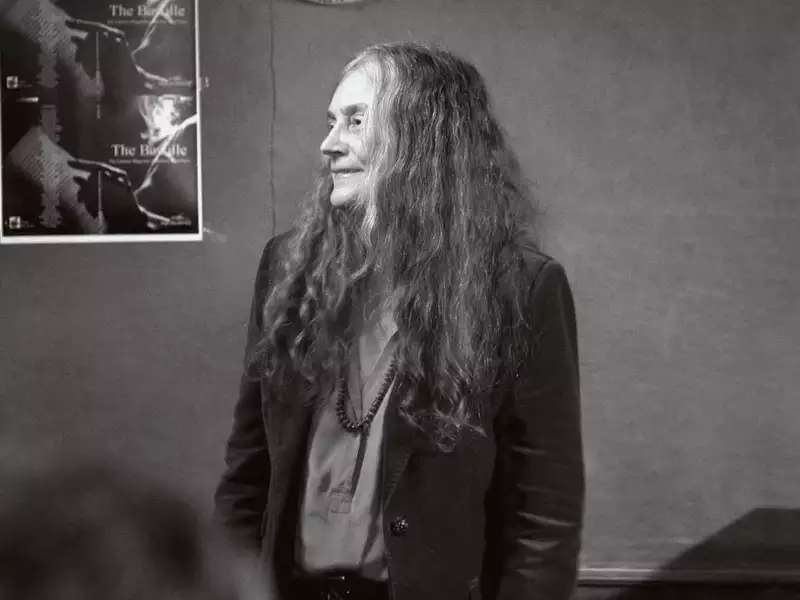
A trailblazer of experimental verse, Alice Notley ’67 was recognized as one of the most influential poets of her generation
For many, Black spirituality in America conjures the expressions of unfettered cadence and rhythm of the preacher, the free-spirited improvisations of the choir, or the unbound emotions of the congregation. So much of the originality in American music can be traced back to the Black church. And yet, in the early days of emancipation from slavery, the very elements of Black culture we celebrate today were the same reasons many Black men and women were held against their will at insane asylums as white psychiatrists diagnosed “religious excitement” as a reason to remove them from society.
In her latest book, Black Religion in the Madhouse: Race and Psychiatry in Slavery’s Wake (New York University Press, 2025), Judith Weisenfeld ’86 — chair of the department of religion at Princeton University and a former Barnard professor — delves into the racialized psychiatry of the period, a subject that she didn’t initially set out to examine.
Weisenfeld was working on another book when she began to notice a pattern in several studies she was examining. It wasn’t long before she delved into the archives of mental health institutions, launching what she calls “several years of marinating in a kind of racial science literature.”
“I remember once I felt that I had gotten it all,” she says, “and then I was reading some speech from a medical school in South Carolina, and I just said to my partner, ‘Oh my God, I can’t believe I’ve descended into another level, even deeper morass, of racism.’”
She began to understand how easy it was for recently freed Black people to be swept into an institution and how the discourse of white psychiatrists made that possible. Nowhere did she find concepts related to current psychological diagnoses, such as post-traumatic stress, that such a population would undoubtedly have been experiencing. Rather, the focus seemed to be on pathologizing the very spiritual practices that sustained Black people while in chains.
“It really solidified for me how hard it was for Black people to make freedom in the aftermath of slavery,” she says.
Research such as this doesn’t come without an emotional cost. Objectivity is required for the work, but it became difficult when Weisenfeld found photos of the incarcerated. Ancestors gazed at her from across generations. “I think what kept me going through it was knowing that people persevered as a whole through this,” she says.
Indeed, the book, like much of African American history, is not without hope. Eventually, the narrative outlines how Black psychiatrists and social scientists, and even some white psychiatrists, began to push back, challenging the racist pseudoscience that had dominated the field. The most prominent among them treated men at the famed Tuskegee Veterans Hospital in Alabama, an institution devoted to caring for Black veterans of World War I, many of whom had difficulties in receiving proper medical treatment in the segregated South.
“That’s the period where you get the first set of critiques," Weisenfeld says.
The historical arc reaches into more recent times, including the community mental health movement and efforts like the Lafargue Clinic in Harlem, where Black patients were treated in a space that combined therapeutic support with social advocacy.
“It was there that they are starting to talk about psychoanalysis as a therapeutic approach,” she says.
Yet troubling parallels with the past persist. As Weisenfeld was researching, her mother died of complications from COVID-19. “Researching this in the context of a global pandemic in which people were very willing to bracket off whole segments of the population as, ‘Oh well, they’re disposable’.... It’s not unlike these claims that it’s racial traits that predispose Black people to have disordered religion and therefore mental illness,” she says.
Weisenfeld, who also is associated faculty in Princeton’s history department and gender and sexuality studies program, traces her intellectual trajectory back to Barnard. “I certainly wouldn’t be doing any of this if I hadn’t stumbled into the study of religion as a field at Barnard,” she says.
Throughout, Weisenfeld’s work remains rooted in historical truth.
“It’s ever more important to tell histories, to investigate the past as the ground on which we stand,” she says. “We can’t move forward to a more truly democratic or equal society without recognizing the long shadow and influence of these kinds of histories.”